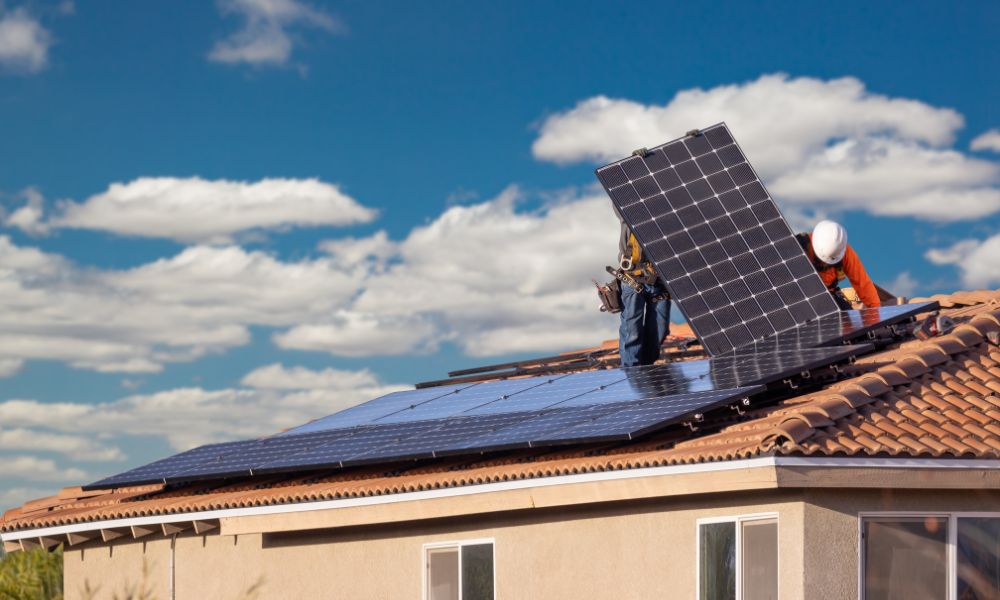A New Era for Green Financing Is on the Horizon, and Disadvantaged Communities Are First in Line to Benefit

Authored by Jessie Buendia, VP of Sustainability and Green For All National Director at Dream.Org
Next week, the Environmental Protection Agency (EPA) will announce the recipients of the National Clean Investment Fund, which will leverage $14 billion to unlock unprecedented levels of financing for green projects in communities across the U.S. Thanks to Biden’s Justice40 Initiative, at least 40% of the $14 billion will directly benefit disadvantaged communities that have historically lacked access to but are most in need of technologies that reduce pollution and improve public health.
And this is not just any award announcement. The National Clean Investment Fund is part of the $27 billion Greenhouse Gas Reduction Fund, which is the largest single investment out of the Inflation Reduction Act’s (IRA) historic $369B in climate funding. and accelerate the transition to clean energy for communities across the U.S.
For leaders in the climate advocacy space like me, it’s been a long journey to get to this moment. The Greenhouse Gas Reduction Fund was announced shortly after the Inflation Reduction Act (IRA) passed in 2021. Since then, green financing experts and advocacy organizations like Dream.Org have been deeply involved in shaping the program, generating comments from thousands of supporters, working in coalition to center community engagement, and collaborating with partners to submit robust applications.
Now, as we await for the EPA to announce awards, I’m excited to finally see this historic opportunity become a reality, especially for communities most impacted by climate change.
Here’s what is on the horizon for a new era of climate financing, and what it means for your community:
- The EPA will award funding to 2-3 nonprofit entities to steward the $14 billion National Clean Investment Fund. These awardees will form a green financing network that will partner with the private sector to provide affordable loans for individuals, families, nonprofits, small businesses, and governments across the U.S. According to a 2023 study, this program could mobilize more than 12 times the government grant over the next 10 years by creating intentional, strategic public-private partnerships.
- Communities will apply for financing, unlocking billions of dollars for clean energy investments that would otherwise not be possible – especially for low-income and disadvantaged communities. The green financing network will use the initial government funding to fund projects for borrowers who might not be able to secure financing for green projects from a traditional bank. That means the communities that need clean, affordable energy like solar power the most will finally be able to pay for it.
- Project teams will build green projects that meet the community’s unique needs, driving down energy costs, reducing pollution, and improving public health. By having access to funding, communities will be able to shape and deploy green technologies in a way that fits their unique needs while creating a more sustainable local economy and improving public health. This will be a game changer for disadvantaged communities that grapple with high energy bills and disproportionate exposure to air and water pollution.
- As communities and businesses pay back their loans, they invest in the next green project, paying it forward to folks who need clean technologies but lack access to traditional financing. The green bank model is the most sustainable and innovative way to unlock funding for clean energy projects. As the National Clean Investment Fund rolls out, we will see exponential growth in the deployment of green projects while increasing the pool of available funding for communities that need it most.
There’s a lot of uncertainty ahead in 2024 as we face an election, a changing climate, and economic uncertainty. However, thanks to the innovative Greenhouse Gas Reduction Fund programs, 2024 marks the beginning of a new chapter for climate equity where disadvantaged communities will have access to the financing they deserve.
